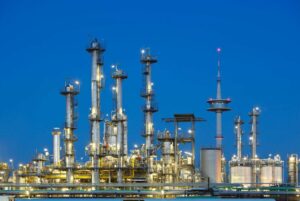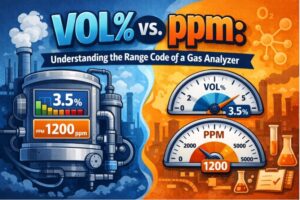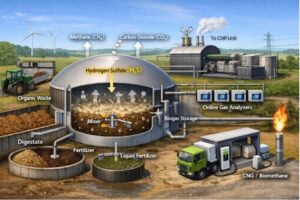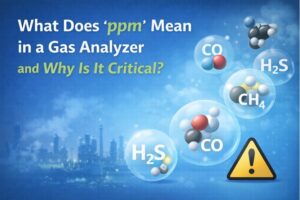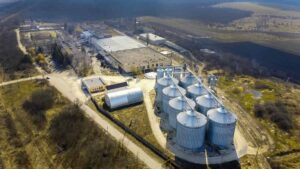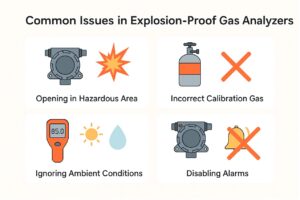With the increasingly stringent global environmental protection standards, vehicle emission monitoring has become an indispensable part of environmental management. Especially in cities, automobile exhaust is one of the main sources of air pollution. Gas analyzers have become an important tool for monitoring vehicle exhaust emissions due to their lightweight and easy-to-use features, sensitive response, and high data accuracy. This blog will discuss the technical principles, detection methods, and future development trends of gas analyzers.

The Technologies Used For Exhaust Emission Monitoring
Gas analyzers play a key role in the monitoring of vehicle exhaust emissions. These devices utilize highly specialized sensor technology combined with advanced data processing and user-friendly interfaces to provide accurate detection of harmful gases in vehicle exhaust. The main technical principles of gas analyzers are described in detail below.
1. Sensor technology
The sensor is the most central component of a gas analyzer, responsible for capturing and converting information about the composition of the gas. The main types of sensors include:
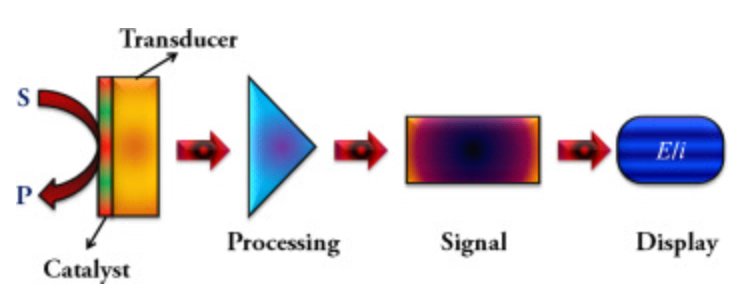
Electrochemical sensors: These sensors detect specific gases through electrochemical reactions. When the target gas comes in contact with an electrode in the sensor, an oxidation or reduction reaction occurs, generating an electric current. The magnitude of the current is proportional to the gas concentration. Electrochemical sensors are particularly sensitive to gases such as carbon monoxide and hydrogen sulfide and are suitable for the detection of low concentrations of gases.
Infrared Sensors: Infrared sensors work based on the ability of gas molecules to absorb infrared light at specific wavelengths. Each gas molecule has its unique absorption spectrum, and by measuring the change in the intensity of the infrared light passing through the gas sample, the type and concentration of the gas can be determined. This sensor is suitable for the simultaneous detection of many different gases, such as carbon dioxide and methane.
Photoionization Detector (PID): The PID sensor ionizes gas molecules by irradiating a gas sample with UV light. The ionized molecules generate an electric current, the intensity of which can be used to determine the concentration of the gas. This sensor is susceptible to volatile organic compounds (VOCs) and is commonly used to detect organic pollutants in vehicle exhaust.
2. Data processing
The data processing unit is the key link in converting the raw data collected by the sensor into useful information. This process typically includes steps such as signal amplification, filtering, digitization and algorithmic processing:
Signal Amplification and Filtering: Signals received from sensors are often weak and may be accompanied by noise. Signal amplification is the process of enhancing these weak signals, while filtering is the process of reducing data noise and improving signal clarity and reliability.
Digital: Analog signals are converted to digital signals by analog-to-digital converters (ADCs), allowing the data to be further processed and analyzed on a digital processor.
Algorithmic Processing: Advanced algorithms are used to correct for sensor drift, temperature effects, and the effects of other environmental factors. Algorithms also enable more complex data analysis, such as trend analysis and comprehensive evaluation of multi-gas concentrations.
3. User interface
The gas analyzer’s user interface is designed to make the unit easy to operate while providing a rich display of information:
Real-time display: The device is usually equipped with an LCD or LED display that shows real-time information such as gas concentration, device status, and battery level.
Data Logging and Output: In addition to real-time data display, modern portable analyzers are equipped with data logging function to store historical data. These data can be transferred to a computer or cloud platform via USB, Bluetooth or Wi-Fi for long-term trend analysis or remote monitoring.
Software and apps: Many portable analyzers come with specialized software or apps that support operation and data analysis on smartphones or tablets, increasing the flexibility and user experience of the device.
Through the integration of these advanced technologies, gas analyzers are able to provide accurate and reliable data to help environmental authorities and vehicle manufacturers effectively monitor and manage vehicle emissions to protect the environment and public health.
Analysis of the Composition of Pollutants in Vehicle Emissions
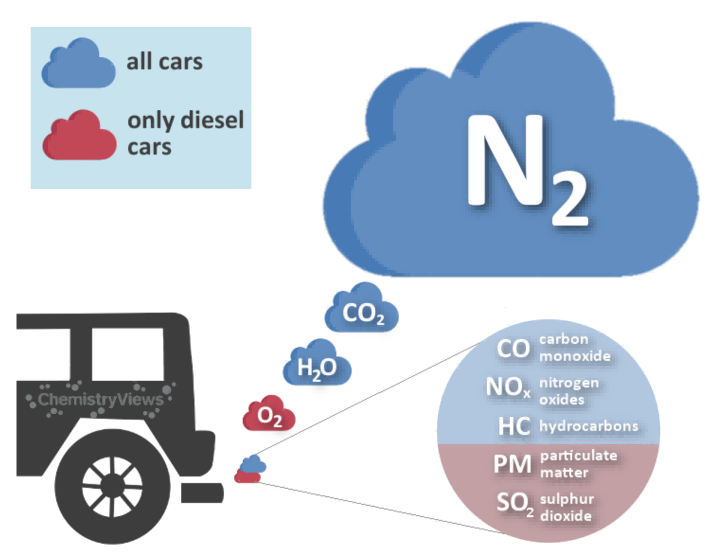
Suspended particulate matter
Suspended particulate matter is one of the most important sources of pollution at this stage. For gasoline engines, the particulate matter that may be generated during operation includes low molecular substances and sulfates; for diesel engines, the amount of particulate matter generated is much larger than that of gasoline engines, and the composition is very complex, dominated by carbon fumes, i.e., carbon particulate fumes with a diameter within the range of 0.1~10μm. The human body in the inhalation of particulate matter, will be precipitated in the lungs, but also with sulfur dioxide or carcinogens occurring adhesion, health hazards.
Carbon monoxide
Incomplete combustion of fuel will produce carbon monoxide. Carbon monoxide can react with hemoglobin in the human body to produce hydroxyhemoglobin, which not only affects the normal combination of hemoglobin and oxygen but also weakens the oxygen delivery capacity of hemoglobin, leading to hypoxia, which is a great danger to human health.
Nitrogen oxides
In the engine, the fuel combustion temperature is very high, at this time the nitrogen in the mixture will react with oxygen to generate nitrogen oxides, usually nitrogen monoxide and nitrogen dioxide are the main. Among them, nitric oxide will destroy the human nervous and respiratory system, and can also destroy the earth’s ozone layer; and nitrogen dioxide because of the solubility of water, will produce acidic pollution, and can react with the atmosphere to generate a large number of photochemical smog, a serious stimulus to the human respiratory system.
Sulphur oxides
4. Gasoline contains sulfur, and some car purifiers convert some of that sulfur into sulfur oxides, predominantly sulfur dioxide, which is responsible for acid rain. After leaving the purifier, sulfur dioxide will further react with oxygen in the atmosphere to produce sulfuric acid fumes, causing more serious pollution. On top of that, sulfur dioxide can severely irritate the respiratory tract and damage human health.
Hydrocarbons
Hydrocarbons are mainly derived from under-combusted components of engine exhaust emissions. Because the mixture is not uniform, or the combustion chamber wall is cold, part of the fuel is not burned directly emissions, after the concentration reaches a certain level, it will hurt human health, manifested in the role of sunlight, and nitrogen oxides reacting to generate peroxide, stimulate the human body’s mucous membranes of the mouth and nose, triggering inflammation, and some hydrocarbons have a pungent odor at the same time as also has the role of supplying the system of fuel drip and evaporation, and formation of incomplete combustion. And the formation of incomplete combustion.
Test Methods for Automobile Exhaust Pollutants
The current automobile exhaust pollutant detection methods are very many, the mainstream equipment has infrared automobile exhaust sensors, the following mainly introduces a few of the more common detection methods in the country:
1. Working condition method testing
The working condition method is a method to test the exhaust emissions of automobiles by using special testing equipment to simulate different forms of working conditions of automobiles. During the test, the chassis dynamometer is mainly used to simulate the road surface when the car is driving, and through the synchronous rotation of the roller and the wheel, thus realizing the simulation of different working conditions of the car, and then using the five-gas analyzer and other automobile exhaust pollutant analysis devices to detect the exhaust pollutant content of the car under different working conditions, so that the actual level of exhaust emissions of the inspected car can be measured more accurately.
2. Idle/double-idle method detection
The idling method is a method of measuring the exhaust emissions of a car under idling conditions, while the double-idling method is a method of detecting exhaust gases at high idling speeds on the basis of the idling method. In essence, the principle of the two methods is the same, but the double-idle method is more accurate. These two methods do not require much testing equipment, the use of five gas analyzers can be.
Specific testing, the first test idle working conditions of the car’s exhaust emissions pollutant values, and then speed up the car to 70% of the rated speed, to be one or two minutes after the car speed stabilization, deceleration to 50% of the rated speed, and once again test the car’s tailpipe emissions pollutant values, that is, to complete the test work.
3. Free acceleration detection
The free acceleration method, also known as smoke testing, is a method of measuring the amount of carbon particles in the exhaust of diesel-engined automobiles by means of a filter paper smoke meter or an opaque smoke meter. Because the exhaust pollutants of gasoline-powered vehicles are dominated by hydrocarbons, carbon monoxide and nitrogen oxides, while the exhaust pollutants of diesel-powered vehicles are dominated by carbon particles, the methods of detecting exhaust pollutants vary from vehicle to vehicle. The test is conducted by introducing the exhaust gas into a smoke meter for measurement, and the quality of the exhaust gas is determined by comparing the smoke value or opacity to determine whether it meets the standard.
4. Vehicle exhaust gas detection method
Vehicle tailpipe testing method is to install the tailpipe testing device and five-gas analyzer in the car, and test the tailpipe pollutant emission data in the process of driving with the car. The main pollutants tested include CO, CO2, HC, NOX, and PM, and the car recorder in the car is used to record the driving process, position information, and speed of the car, etc. The analyzer utilizes different gases to analyze the infrared wavelengths of different gases. The analyzer uses different gases to analyze the specificity of infrared wavelength electromagnetic wave energy to further detect the level of pollution.
The method can be detected by accessing the car’s traveling computer, real-time reading of the car’s air intake, intake temperature, engine water temperature, injection pulse width, engine burst and other parameters, so as to obtain the value of the combustible mixture in the combustion chamber of the automobile during the driving process, and calculate the content of the various products of combustible mixture combustion, i.e., the emissions of the tailpipe gas and the instantaneous emissions of various tailpipe gas pollutants. ( Image courtesy of Springer open )
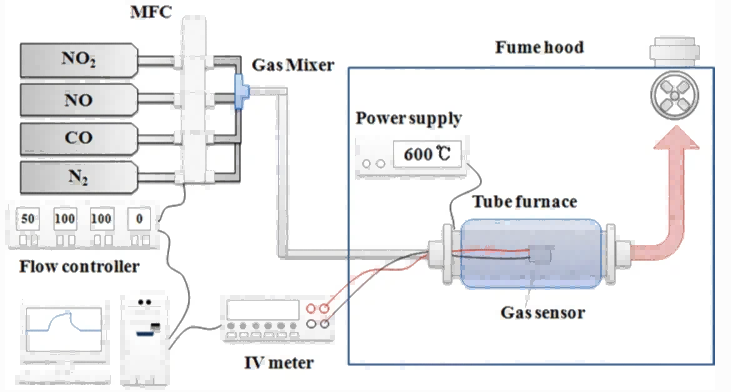
5. Remote sensing method of detection
It is mainly used for the synthesis of integrated transmitter-receiver analyzers, infrared and infrared detection cameras, integrated infrared instrument analyzers, the principle of detecting motor vehicle emissions during the pollutant concentration testing process, which can be recognized as an antipodal wave. In the case of vehicle emissions and other pollutants, if the vehicle is detected, whether the emission test exceeds the standard.
Vehicle Emission Standards and Regulations Around the World
Vehicle emission standards are government-set norms designed to limit the amount of harmful gases emitted from vehicles with internal combustion engines. These standards not only play a key role in protecting the environment and public health, but also drive advances in automotive technology and clean energy. Below is a detailed description of emission standards and regulations in several major countries or regions:
- U.S. EPA Standards
The U.S. Environmental Protection Agency (EPA) is responsible for setting and enforcing standards for vehicle emissions. Since the enactment of the Clean Air Act in 1970, the EPA has updated its emission standards several times in response to growing environmental concerns. Emission standards in the United States fall into two main categories: those for passenger cars and light trucks, and those for heavy-duty vehicles.
Light Duty Vehicle Standards: Includes limits on carbon monoxide (CO), nitrogen oxides (NOx), volatile organic compounds (VOCs), particulate matter (PM), and carbon dioxide (CO2) emissions.
Heavy Duty Vehicle Standard: Focuses on monitoring NOx and PM emissions because these vehicles typically use diesel engines, which have different emission characteristics than light-duty gasoline vehicles.
- Euro standard
The European Union has adopted a series of emission regulations known as “Euro” standards, which have evolved from Euro 1 in 1992 to Euro 6. Each new standard introduces stricter limits on the emission of major pollutants.
Euro 6 standard: Compared to the previous standard, stricter regulations have been made to reduce NOx and PM emissions, especially for diesel vehicles. For example, Euro 6 sets the NOx emission limit for diesel vehicles at 80 mg/km, a significant reduction from 180 mg/km in Euro 5.

- Chinese national standard
China’s environmental protection authorities have set national standards (the “National Standards”) that progressively introduce stricter emission limits from National 1 to National 6. The National 6 standard has been in effect since 2019 and is the most stringent standard available.
National VI standard: Extremely stringent limits on NOx and PM emissions, especially for light and heavy diesel vehicles. In addition, the National VI standard introduces a limit on the number of particulate matter (PN), further controlling the emission of tiny particles.
Implementation and monitoring of standards
Gas analyzers play a vital role in the implementation of these standards. They are not only used for emissions testing on the vehicle production line to ensure that new vehicles are compliant, but are also used for roadside inspections and routine vehicle testing to ensure that vehicles continue to comply with emissions standards over their lifetime.
Global trends and challenges
Although standards vary across the globe, the general trend is towards more stringent emission limits. With growing global concern over climate change and air quality issues, future vehicle emission standards are expected to focus more on reducing greenhouse gas emissions and further reducing harmful emissions. At the same time, this poses new challenges and requirements for vehicle manufacturers, regulators, and technology developers.
Conclusion
Environmental pollution caused by automobile exhaust has brought a serious threat to people’s survival and development, and the introduction of new standards for automobile exhaust emission is of great significance to improving urban air pollution. To meet the requirements of the new standard, based on the existing technology, we should upgrade and optimize the automobile exhaust gas detection method and infrared automobile exhaust gas sensor to keep pace with the times, to reduce the environmental problems brought about by automobile exhaust and promote the continuous improvement of China’s atmospheric environment. Gas analyzers play an important role in the monitoring of automobile exhaust emissions, which not only improves the efficiency and accuracy of monitoring but also makes an important contribution to environmental protection and urban health. With the advancement of technology, these devices will play an even more critical role in the field of environmental monitoring in the future. If you have any questions, please get in touch with us.





